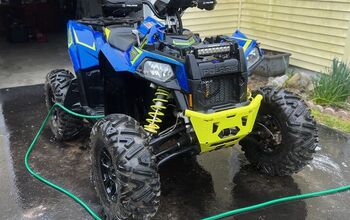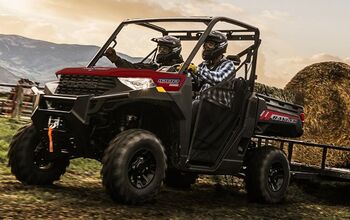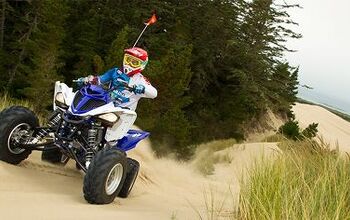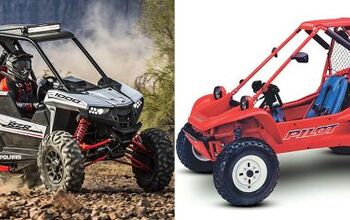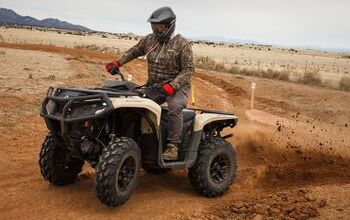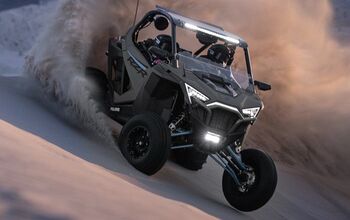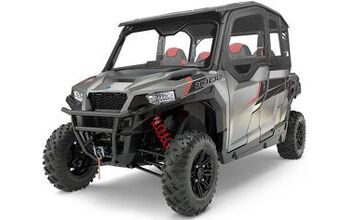TESTED: 2024 Honda Talon with Showa Suspension

It’s Not About Winning, It’s About Feeling Something
It had been five months since I’d last grasped the wheel of a Honda Talon 1000. And even then, it was short-lived. We were in the California desert on assignment and the opportunity arose to borrow Honda’s tried and true UTV with a spunky new turbo – courtesy of Jackson Racing. So, of course we put up our hands for a test-run, which resulted in a unanimous vote of confidence. Jackson’s kit integrated seamlessly, and the rides were a blast between contingency and qualifying. The place buzzed with excitement and energy from fans and racers alike. And as we bobbed and weaved through the crowd of cars - looking for an excuse to go farther and faster — it gave us this feeling… although I couldn’t put my finger on it at the time.
Once the trial was over, I had little idea of when I’d be able to drive another Talon, nor did I know that when the chance came, it would be at the same place as the last. Since Showa has decided to flex its muscles and jump into the side-by-side segment, lucky folks like me are invited to unique experiences through routes like Rattlesnake Canyon to ponder if utilizing its aircraft knowledge and specialized moto technology as basis to develop premium products for four-wheeled vehicles was worth the effort. Because for 2024 and the foreseeable future, the non-Live Valve Talons will be equipped with a respectable, and modifiable, Showa suspension system.
Honda introduced the Talon in 2019. The first sport side-by-side made by the Japanese manufacturer, the Talon was initially offered as a two-seat model in two trim levels, the 1000R and 1000X. The lineup has since expanded to include a four-seat model and seven different trim packages for the 2024 model year. It has proven to be a popular platform for both recreational enthusiasts and racers alike, providing Honda reliability alongside premium parts – including Showa suspension components on the ‘standard’ models of the Talon line, on both the two and four seat models. They come with approximately 17.7 inches in the front and roughly 20.1 inches of travel in the rear. And a substantial range of pre-load settings from very soft to firm, appropriate for high and low speeds.
The addition of Showa suspension is new for 2024 and was the result of a collaboration between Honda and Showa engineers, who focused on enhancing ride comfort and rebound control while maintaining the shocks’ bottoming resistance for bigger impacts. To test this theory, Honda sent us to Johnson Valley to drive their latest Talon models equipped with the new Showa suspension. And what better a place to discover whether their engineering efforts were worthwhile than the harsh high desert landscape of California, where once a year thousands of off-road enthusiasts gather to race and ride during the ‘King of the Hammers.’
Did you know that once a year, a small part of the Mojave Desert starts to hum? If the wind dies down, you can hear the sound – that eerie, indistinguishable vibration – from miles away. There’s a rhythm to it. Whether or not you know what you’re listening to, this reverberation has musicality. However, it breaks down upon approach, becoming both more and less discernable, depending on who you are and where your interests lie.
The nearer you are, the more chaotic and unstructured the noise becomes. For the untrained, it’s like looking closely at a “Monet”; what was once united and harmonious from far away, paints an ill-defined picture immediately in front of you. To the novice, the sounds were an offensive cacophony, the type to which people plug their ears in response. To the aficionado, the gearhead, the off-roader…this was a symphony performed by thousands of engines at King of the Hammers.
The stage was set on a dry lakebed, designed (by default) using rubber and tread, bursts of exhaust, and shuffled footsteps. Scenery would not be outdone by the orchestra, and so this commanding concert was matched in substance (and perhaps in merit) by a nebulous hovering ominously over the expanse, stretched into the horizon veiling everything that lay just below. Particles hung in the ether, shimmering in suspension before the constant inhalations of intakes and inhabitants pulled large concentrations of those microscopic granules into their filtration systems.
For the vehicles, that was an oiled-up sponge; for us patrons, that would be our lungs. Neither were a match for the damage it would do, for the coughing and stuttering. My whole experience was simultaneously abrasive and fascinating, wandering through a dense cloud of dust to chase a few races and document a legacy that was first written out on a napkin in 2007. I’d spend over a week there in January, and by February, I wasn’t sure I’d return ever again. That was the last time Johnson Valley drew me in. In fact, KOH has been the only reason I’ve ventured to that region. Until now, of course.
It was staggering how different, and quiet, Means Dry Lake is most of the time compared to KOH. Wind howled as usual, but it carried away any other sounds which could have otherwise lingered and filled the atmosphere. At least with the motors off. However the dust, with several journalists trying to break something through every obstacle, was on-par. But that was the perfect excuse to give each other plenty of space between us and ultimately play a slippery, ruckus game of cat-and-mouse across each span until the next junction.
In the blistering heat of a coming summer, there was only one day to properly test Honda’s new Showa suspension system, and so with a “heavy heart”, we put foot-to-the-floor through the dunes at the edge of the valley, into the two-wide sandy shoots that crisscross the racecourse, up the hills through a forest of Joshua Trees, and edging the rocky cliffs that led us to our lunch spot. I hadn’t had so much fun in a Talon before – giving it gas (and brake, then gas again) through every turn. Response from the 999cc liquid-cooled engine was immediate – enough. It effortlessly ran through the gears as my speed rapidly oscillated to maneuver through bushes and rock outcroppings, or assist as I occasionally moved to pass more casual drivers.
Big Red team members helped me adjust the preload on the springs, front and back, from the base settings – from median for both high and low-speed – to a firm-soft combination. I gained confidence with the machine at its stock positioning. Medium gave the shocks sufficient play over stones and other obstructions, while holding its ground in tight quick turns. A softer front and just off-center firm setup in the rear provided more travel, as you’d expect, through the rough, translating to a touch more comfort from the cockpit. Noticeable? More like it was less noticeable, which is a positive to say the least. A stiffer backend only made for predictable, snappy turning that was further aided by Honda’s receptive return-to-center EPS (electric power steering) system.
However, even with the support of all the OEM’s contemporary tech, if you unknowingly ride in “full soft” – which is what I did on our way back to homebase – the ride became something of a butt-puckering affair. One of the Honda personnel kindly adjusted the Showa suspension while I snacked on a sandwich to offer me a range of experiences that day, but maybe forgot to let me know. As I chased down my comrades, whipping through turns and reacting to challenges the same way as when I’d come through the trail that morning, something felt undoubtedly…off. So much so that I lifted a wheel or two as the car lurched further than expected to the outside of the apex. That’s when I turned to my passenger to ask if he’d, perhaps, altered the suspension. To which he smiled and responded, “oh, yeah.”
The drivetrain in the Talon hasn’t changed since it was first introduced in 2019. The inline twin motor, plucked from the Africa Twin motorcycle, is still coupled with a six-speed Automatic Dual-Clutch Transmission (DCT) which can be operated using flappy-paddles for those that prefer the finer things in life. The chassis, too, has remained unchanged, as has nearly all of the componentry, save for the suspension. So, why did Honda send us all the way to the desert to test the upgraded bouncy bits on their sport side-by-side? Because unlike other OEMs who pull products from the shelves of Öhlins, Fox and Walker Evans, Honda has opted to partner directly with a suspension manufacturer to tailor the componentry to the needs of their customers.
Strategic partnerships, like with Jackson Racing and Showa, work to quickly respond to the needs and wants of the powersports community. And although they’ve partnered with Showa for years now in their moto division, joining forces for the four-wheeled options was a prudent choice. Yes, they still offer Fox’s Live Valve system for their deluxe packages, upgrading the base suspension systems to Showa literally raises their bar. Honda’s relationship with Showa dates to the end of World War II when the two brands began collaborating on suspension systems for the newly formed Honda Motor Co.
Showa Aircraft Precision Works was founded in 1938, but following the conclusion of WWII, they transitioned their efforts to the automotive and motorcycle industries, using their aircraft knowledge to develop suspension products for motorcycles made by Honda. That relationship developed over the years, with Honda Racing Corporation eventually accounting for more than 50% of Showa's business. With a long history of manufacturing high quality suspension systems and components for motorcycles and motorsports alike, it’s no wonder Honda chose to update their Talon line with Showa.
In a full day of fun in the sun with Big Red, I didn’t find out if Showa was better than its predecessor; admittedly, I hadn’t driven the flagship Talon much, so I had no prior opinion formed. What I did discover out in Johnson Valley, though, was two-fold: when the dust settles and the cars clear, this area is magical. And that despite each barrier or every impediment, the two-seater Showa-equipped Talon 1000 traveled across the desert with ease. I might not have an equal rival to compare it to, but it’s not quite how the new suspension system stands up against the rest; it’s about how it makes you feel by the end of the ride.
For me, baking in 100-degree heat, hacking up the dirt caked in my airways, and white-knuckling across that vast expanse I’ve only witnessed from within a blinding cloud, this journey helped me find something that I could quite put my finger on the last time. I’d finally found the word… inspired.

Kyra Sacdalan is an editor and journalist by day, and a PR & marketing wiz by night - with a passion for people, places and things. Someone coined the term 'Cultural Bloodhound,' which is a title she wears with pride. From discovering Haikyos in Japan on a dual-sport motorcycle, to exploring the booming culinary scene of Baja California, racing Go-Karts in Italy to doing donuts in an Ikea parking lot in Russia with professional drifter, or documenting races like the Dakar Rally; the list goes on and with every new experience and interesting idea, she's ready to say 'yes.'
More by Kyra Sacdalan





























































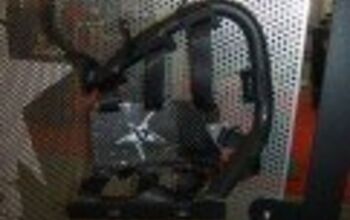

![More ATVs on Ice [video]](https://cdn-fastly.atv.com/media/2022/10/24/8742964/more-atvs-on-ice-video.jpg?size=350x220)
